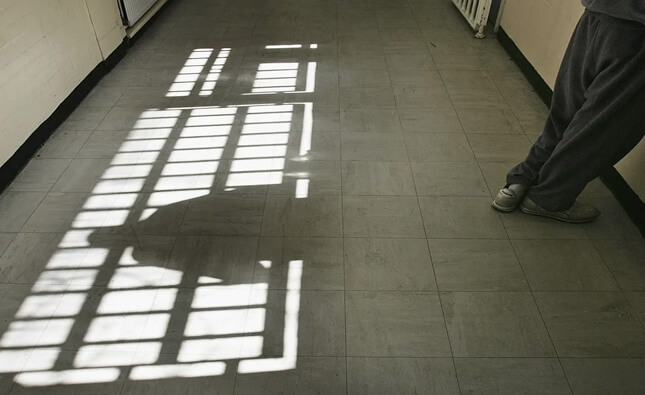
“My students have shown me so many times that it’s not always about being the perfect person in the perfect position – it’s about showing up when you’re needed.”
~ Jill Biden
For the team of teachers here at MOI offering mindfulness classes in the Re-Entry Program at the Douglas County Correctional Facility, the value of just showing up cannot be underestimated. From feedback gathered from students who complete our 4-week series of classes on the foundations of mindfulness, seeing the good, difficult emotions, and gratitude, the common refrain is something to the effect of “thank you for looking past what got us here and treating us like human beings.” And someone almost always becomes visibly emotional and asks “why do you do this?—take time out of your busy lives to come inside and teach us?”
During check-ins each week, they share amazing stories from inside of incorporating our lessons (or, equally significant, of forgetting to incorporate the teachings) on seeing the good and extending lovingkindess or of practicing deep listening. Most of them truly engage with the material and give us constant reason to believe their lives inside go better when they remember to be mindful.
To set the stage for the transformational potential of mindfulness, we open each 4-week series in the women’s unit by introducing some incredible stats shared with me during a 2-day training to teach mindfulness in prisons held at the San Quentin State Prison. We spent the first day inside participating in a session of their year-long mindfulness program called “Guiding Rage Into Power,” (GRIP) which focuses upon the concept conveyed in this Viktor Frankl quote: “Between stimulus and response there is a space. In that space is our power to choose our response. In our response lies our growth and our freedom.” In the GRIP class, they call that space “the moment of imminent danger.”
Of the 113 men who had both graduated from the class and been released from prison in the 6 years the program had been running, not one of them reoffended. That’s an unheard-of recidivism rate of 0%! We spent the second day of our training on the outside with a member of that graduating class. He had spent 41 of his 53 years behind bars and gave full credit for his release and new lease on life to what he learned in the GRIP class. Learning to mindfully choose how to respond rather than automatically react was, literally, life-changing for him. That the teachers just kept showing up week after week was the true game-changer.
In his words: “I never had nobody care enough about me to keep showing up like that. And I didn’t deserve for them to do that. At the start, I didn’t want nothing to do with what they were trying to say. I was and always had been bitter. But that didn’t stop them wanting me to be in their group. I woulda never got through it or got to the outside without them caring about me like that.”
Our DCDC class is 4 weeks, not 52, but the same effect is felt. Many specifically name beingable to create space between stimulus and response as their biggest takeaway, which is huge! But almost all then offer emphatic and heartfelt gratitude to us for showing up without judgment, sharing our own stories and struggles, and treating them as fellow human beings. “We don’t get a lot of that in here” one said under her breath on her way out the door being held open by an expressionless correctional officer. And with a look back at us from the single-file line with her hands behind her back, she said, as if to punctuate the notion: “But we need it!” We here at MOI are grateful to be in a position to show up and give to them some small measure of what they need in order to see and know their worth.
By Katie Hupp
MOI Teacher
